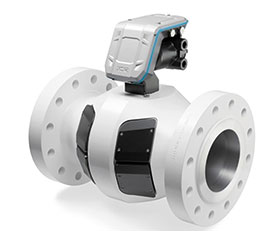

The branch held an online technical evening on 3 June, which was presented by SICK Automation. Our presenter, Dustin Naicker, has more than 9 years’ experience in analytical instrumentation and analysers. Dustin gave an in-depth presentation on ultrasonic flow and the different factors that need to be considered in the selection and design of these critical instruments.
The increasing global demand for energy drives a need for diversification in gas production, which puts a stronger focus on the development of unconventional natural gas sources, such as shale gas and coal seam gas. As a direct consequence, the number of unconventional gas wells is increasing worldwide.
Monitoring of unconventional gas production is commonly done via a gas flow meter close to the wellhead or at the gathering station. Depending on the reservoir and the quality of the gas treatment equipment on the wellhead, the gas may contain liquids and contaminants. They can, depending on their volume fraction, degrade the flowmeter measurement performance and, therefore, the monitoring reliability. Furthermore, the output of the gas well may fluctuate unpredictably on relatively short time scales and will, depending on the maturity of the gas production, generally decline over longer time periods. Monitoring of a time-varying production rate requires a rugged flowmeter with high turn-down and with minimised operational costs to meet economic requirements.
Gas metering points in this production environment are traditionally equipped with differential pressure meters even though new-technology gas meters like ultrasonic meters provide several advantages over differential pressure technologies. Gas producers have experienced in the last years that the lower operational expenditures and technology benefits of ultrasonic meters compensate for the higher initial investment which results in the fact that ultrasonic meters for gas production applications become more and more accepted.
The use of ultrasonic meters in gas production applications, at gathering stations, or in gas processing plants, is not limited by the ultrasonic technology itself.
It has been shown that the combination of ultrasonic technology, a special meter design, low manufacturing tolerances, and minimal meter-to-meter variations allow transferring ambient air flow test results to high-pressure natural gas. Understanding the key influencing factors on the meter characteristics and keeping them at an uncritical level of variation is vital in order to meet Class 1 performance requirements.
Finally, it could be shown with field test data from a shale gas application that employment of customised ultrasonic meters for gas production applications can have substantial economic advantages even after a short time. Lower lifetime costs are also significant.
The installed base of ultrasonic meters in gas production applications is rapidly increasing. Gas production companies may be forced to pay more attention to operational costs of wellhead equipment and overall profitability driven by worsening economic conditions for the oil and gas industry. Here, virtually maintenance-free ultrasonic meters customised for gas production applications can contribute to a more economical gas production. not least thanks to their high turn-down ratio.
| Tel: | +27 11 312 2445 |
| Email: | [email protected] |
| www: | www.saimc.co.za |
| Articles: | More information and articles about SAIMC |

© Technews Publishing (Pty) Ltd | All Rights Reserved